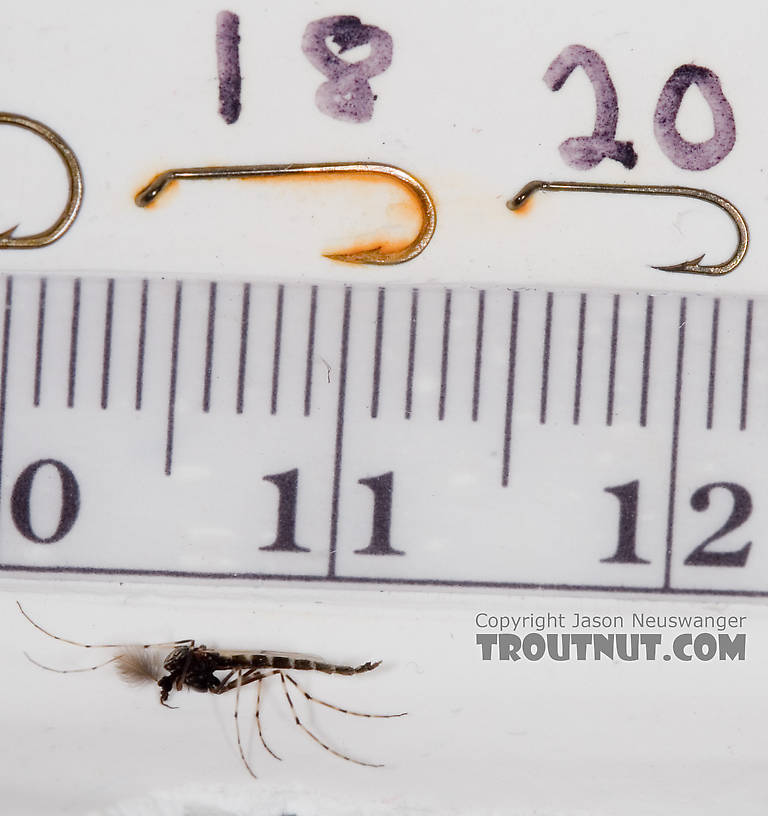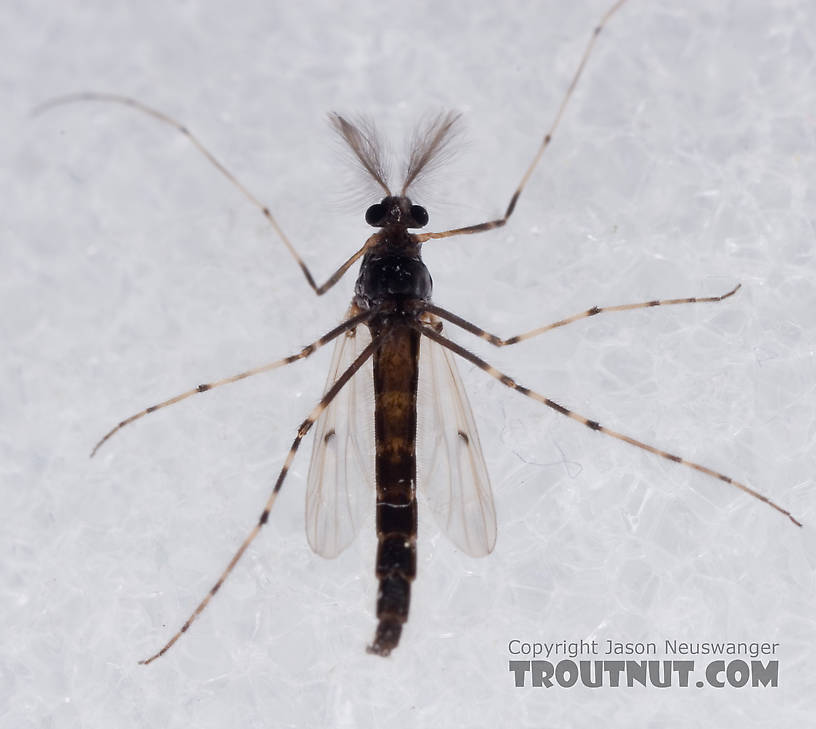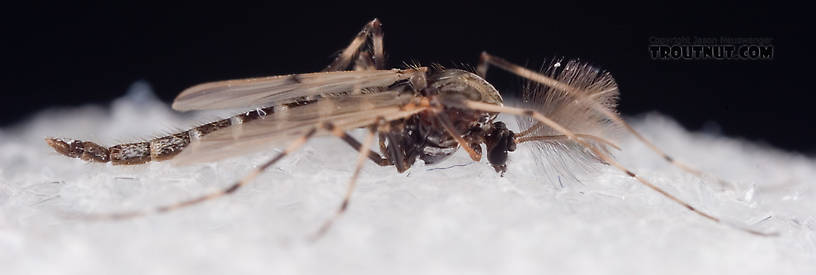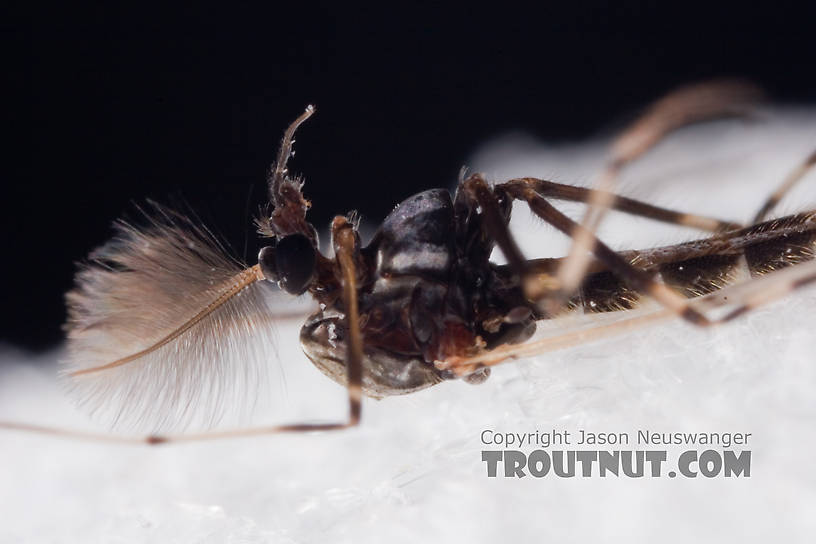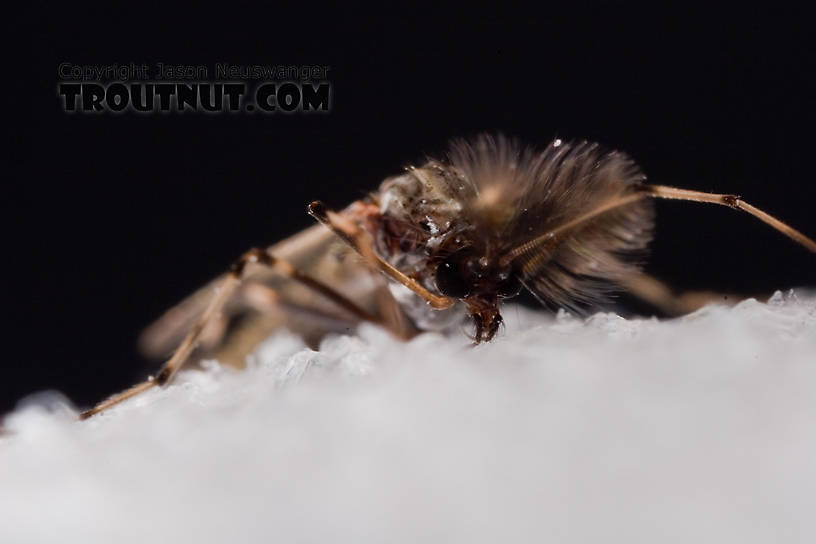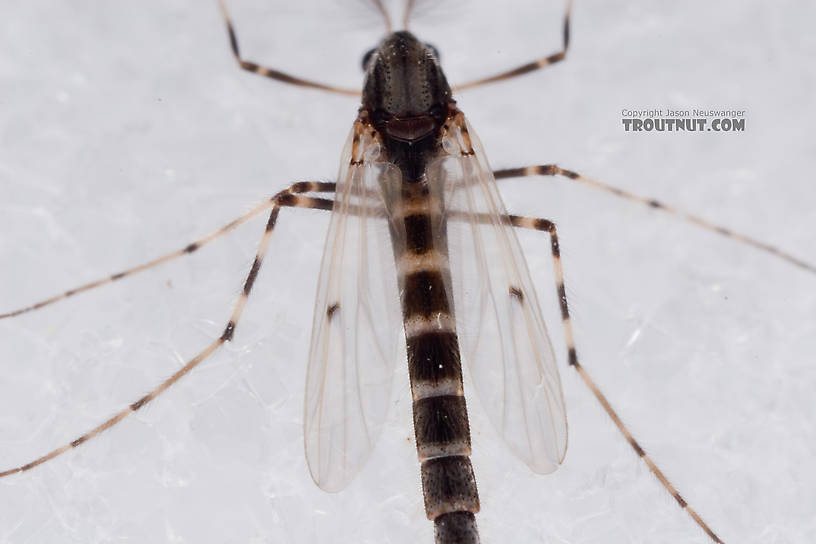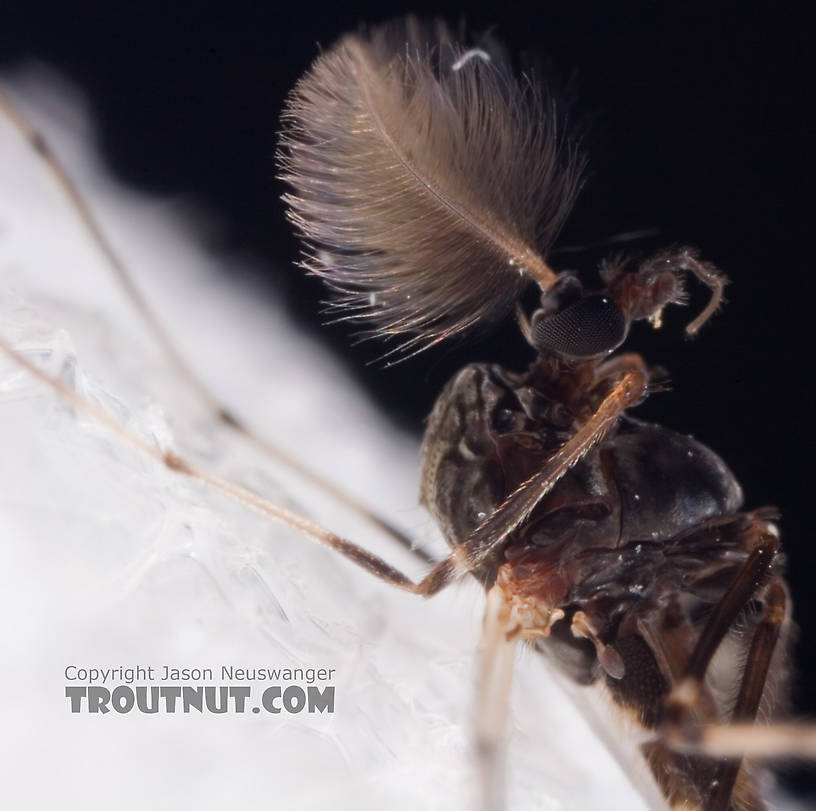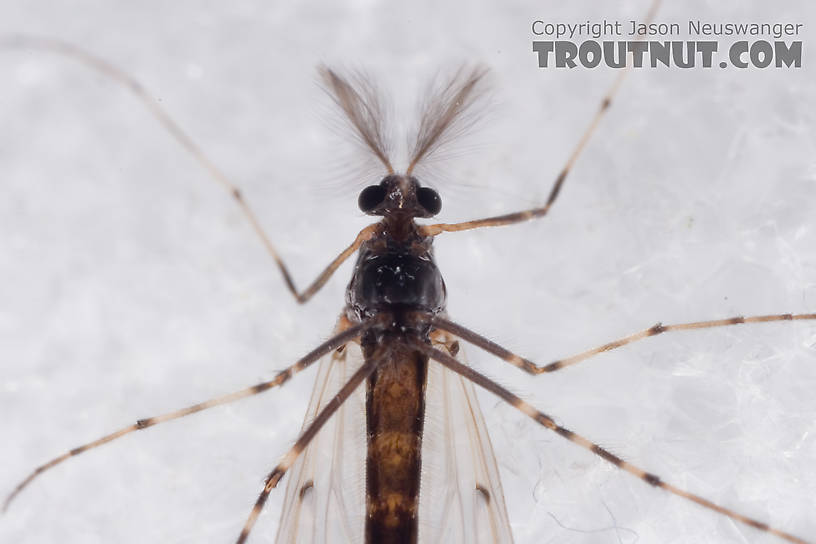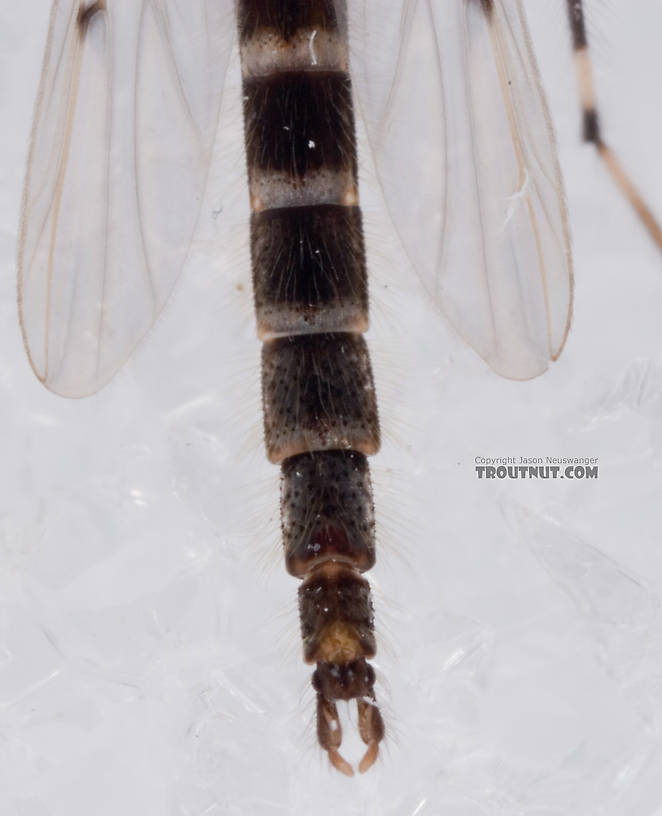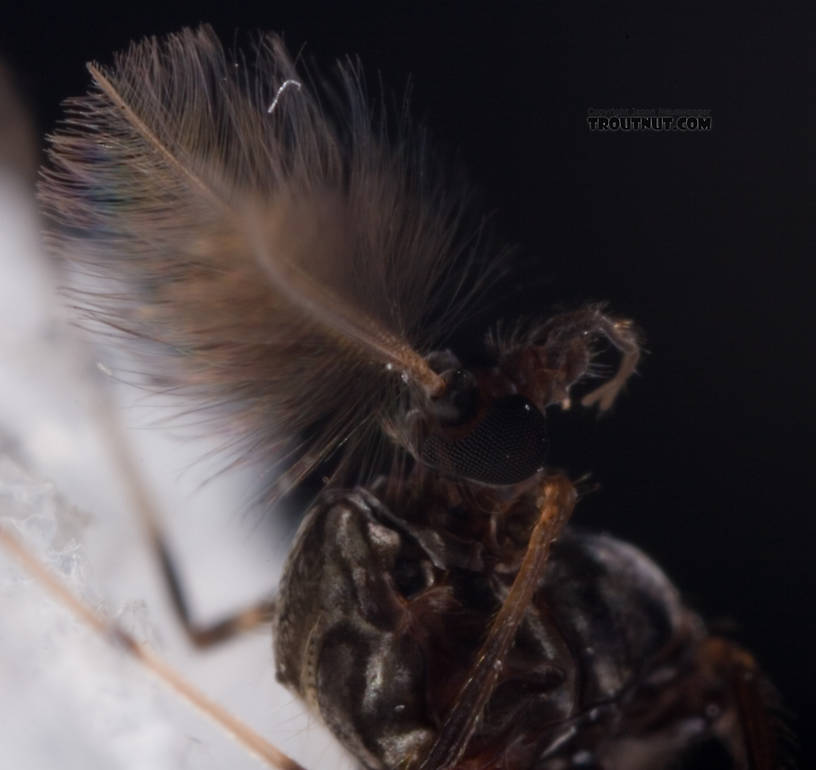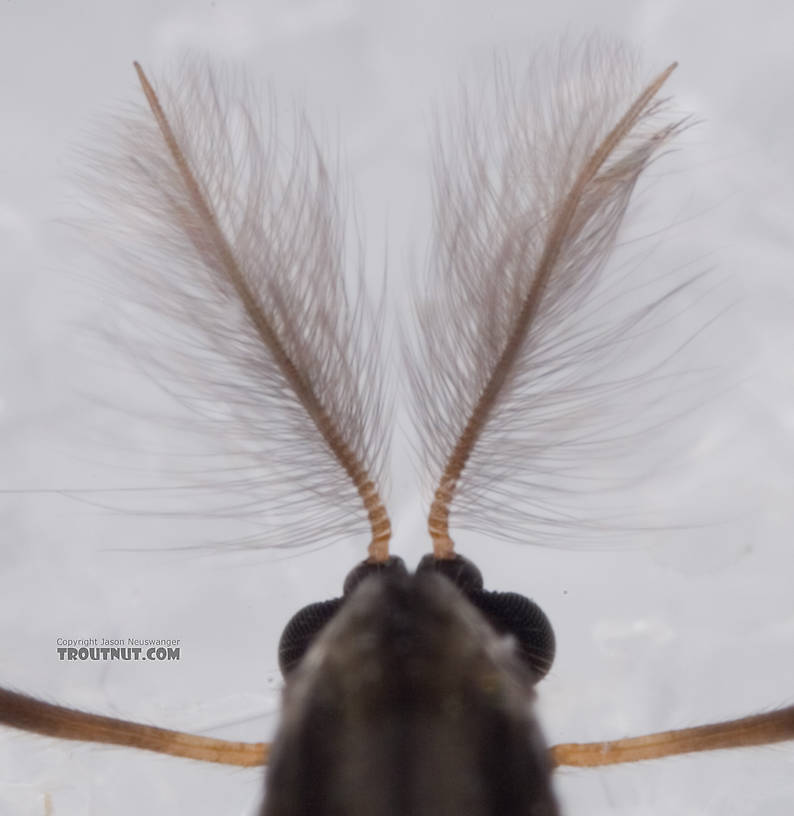Blog & Latest Updates
Fly Fishing Articles
Insects by Common Name


Male Stictochironomus Midge Adult Pictures
Classification
Kingdom
Animalia (Animals)
» Phylum
Arthropoda (Arthropods)
» Class
Insecta (Insects)
» Order
Diptera (True Flies)
» Family
Chironomidae (Midges)
» Genus
Stictochironomus
This midge and several like it, including a female I also photographed, hatched from larvae which were living in some fine mud I'm using as substrate in my bug-rearing aquarium.
This midge was collected from Mystery Creek #62 on April 10th, 2007 and added to Troutnut.com on April 10th, 2007.
Recent Discussions of this Adult
chironomids-East versus West 3 Replies »
Spring can't arrive soon enough...after ice-out streamer fishing and before the high water levels on moving water venues become more reasonable, I love to fish chironomid imitations in ponds. In ponds containing few forage fish, this begins before the ice goes out entirely. My question is simple: why are chironomid species in the East so much smaller than out West? I have fished the Kamloops area of BC which is, of course, world renown for huge (size and quantity)chironomid hatches and the difference is unbelievable. I suspect it has to do with lack of fertility in my home waters, still or otherwise. Can anyone help?
ReplyFirst spoils of my bug-rearing aquarium 19 Replies »I returned from a weekend out of town to find that several midges had emerged from my bug-rearing aquarium. I never specifically put them in it in the first place; apparently, they were embedded in the river silt I used as the substrate for part of it.
I'm pretty sure this one and the other specimen belong to the same species, and I'm guessing the variation in antennae form is a gender difference. It's kinda neat. The antennae on the male seem to be made to be imitated with CDC, except that they're about 100 times too small.
In fact, from the ruler picture, you can see that the whole body of this midge is thinner than a size 18 dry fly hook. I'm not sure how a griffith's gnat is supposed to imitate such a thing.
ReplyI'm pretty sure this one and the other specimen belong to the same species, and I'm guessing the variation in antennae form is a gender difference. It's kinda neat. The antennae on the male seem to be made to be imitated with CDC, except that they're about 100 times too small.
In fact, from the ruler picture, you can see that the whole body of this midge is thinner than a size 18 dry fly hook. I'm not sure how a griffith's gnat is supposed to imitate such a thing.
Start a Discussion of this Adult:
Top 10 Fly Hatches
Top Gift Shop Designs
Eat mayflies.
Top Insect Specimens
Miscellaneous Sites
Troutnut.com is copyright © 2004-2024 Jason
Neuswanger (email Jason). See my FAQ for information about use of my images.
 privacy policy
privacy policy

